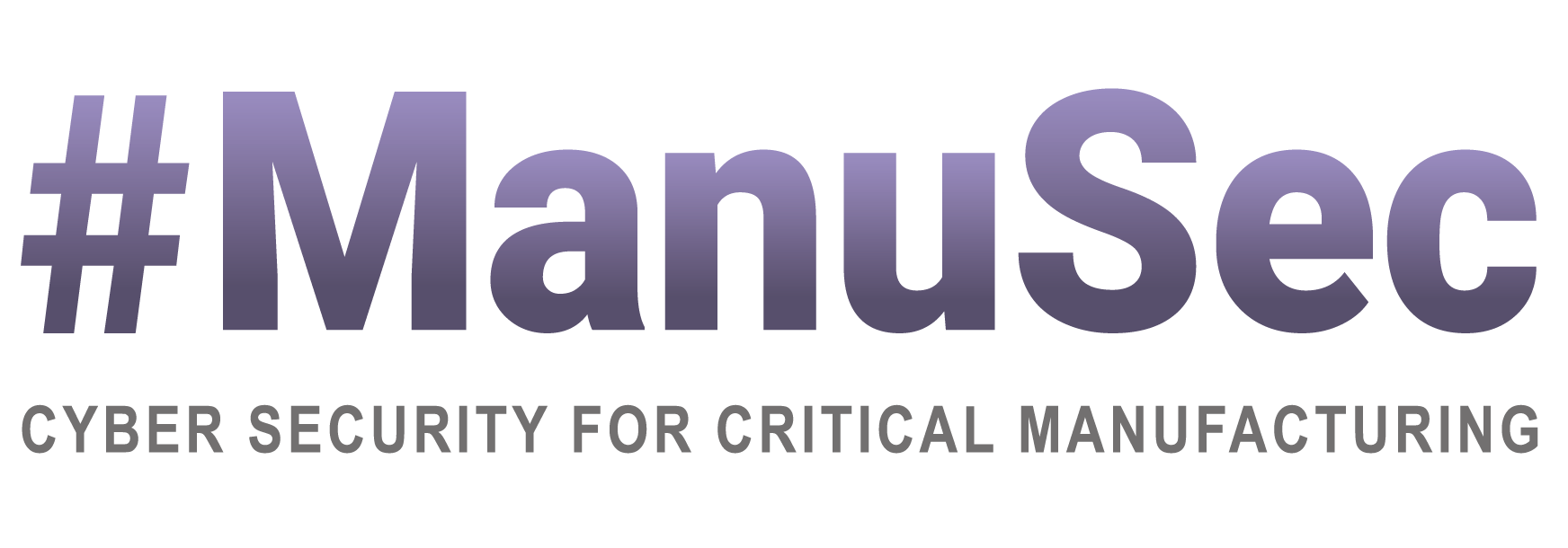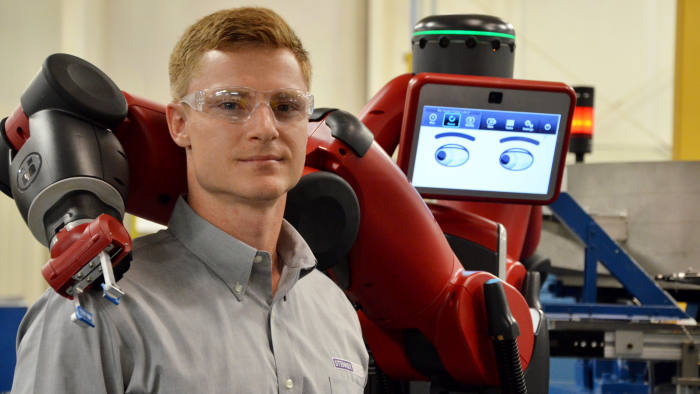The Cobots Are Coming. Here Are 5 Reasons Why That’s a Good Thing:

Manufacturers are increasingly showing interest in collaborative robots – known as cobots. And why shouldn’t they? Cobots are affordable, lightweight, flexible, and businesses large and small are using them to change the way products are designed, manufactured and delivered. According to a recent report from Interact Analysis, the market for collaborative robots is expected to reach a value of $7.5 billion by 2027 – accounting for 29% of the entire industrial robots market. If you’re not working alongside a cobot right now, chances are you will be very soon. Here are 5 reasons why that’s a good thing:
#1: They’re safer to be around.
Cobots stem from the need to improve the safety of traditional automated machinery working alongside humans in factories. Industrial robots are heavy and programmed offline – they are, therefore, less intuitive and constrained in their ability to respond to new stimuli mid-task.
But unlike traditional robots, industrial cobots are limited in both speed and power to avoid human injury – as per global industry-approved safety standards set to protect employees. Cobots have sensors capable of detecting human presence so to reduce the cobot’s operating speed as the human gets close, and can be programmed to power off instantly if a worker gets too close. By limiting speed, payload and force, cobots stop almost instantly when they encounter an ‘obstacle’. When the human leaves, cobots swiftly resume their tasks.
Additionally, cobots protect human workers by reducing the risk of injury from dangerous jobs and repetitive movements, since cobots are ideal for strenuous manual processes that take place around human workers but that don’t require human dexterity, critical thinking, or on-the-spot decision-making. They are a perfect fit for tasks that can cause ergonomic injuries.
#2: They are affordable.
Deploying cobots costs far less than deploying industrial robots. Cobots are small, lightweight, don’t require protective cages, and don’t demand major renovations or installation projects. Their arrival means that many who couldn’t afford to embrace robotics previously, now can.
This is good news for smaller companies and manufacturers struggling with scarce labour who can now afford capabilities valued by their largest competitors in the global marketplace.
#3: They are simpler to programme.
Cobot programming – or ‘cobot training’- is much simpler than robot programming. Cobots’ software feature easy-to-implement, pre-engineered accessories that let users set up processes in hours instead of days or weeks, and doesn’t require advanced engineers to be able to set up, maintain, and operate them (which is good news in times when highly capable programmers are scarce).
Some cobots’ software even utilize AI and machine learning to enhance their performance or usefulness over time, while others offer features such as ‘lead-through programming’ – where the human operators can literally take the cobot by the arm and show them where to go when they want to record a path for the cobot to follow.
#4: They are reliable.
Once companies automate processes with robotics, they don’t look back. They embark on a journey that depends on consistent, reliable output – every day, year after year. Depending on consistency for productivity and profitability means, of course, that companies fear one word: downtime. With this in mind, it is understandable that many evaluate the implementation of new technologies based on how reliable they are. Cobots are passing this test.
Despite looking more fragile than traditional industrial robots, cobots are designed for long-term durability, are nearly maintenance-free, are sealed against dust, rated for high-temperatures, and work well in harsh environments that are not suitable for humans.
Many cobots can work 24 hours a day straight – meaning, they don’t often need maintenance breaks. Additionally, cobots are flexible – can be programmed for a variety of tasks- and easy to relocate, so they start working very quickly after implementation and, as a result, their return on investment occurs within a year in most industries.
#5: They come in peace.
Much has been said about machines replacing humans in the workspace. But the advent of cobots is a queue to augment workforce, not replace them.
Cobots are designed to assist human workers such as by providing them with an extra set of hands or taking on activities that humans themselves are not signing up for – thus alleviating the pressure on factories that may be suffering from labor shortages or employee turnover caused by the necessity to assign repetitive tasks to highly skilled professionals who feel they could be doing something more rewarding.
Automation itself has been around for long. The goal has always been to drive efficiency, speed, and cost savings, by having machines perform certain tasks faster and in larger scale. Now, this is being accomplished by no longer segregating humans from machines, but instead optimizing the time of both through collaboration.
Cobots are particularly effective for performing simple and repetitive tasks, but with the significant advantage of being able to work alongside humans without causing safety risks. Unlike their human co-workers, they don’t get tired or lose concentration. Manufacturing companies are leveraging this by leaving the tedious and dangerous tasks for the cobots and redesigning the jobs of skilled workers to take better advantage of –and improve- their skills. The use of cobots in the factory therefore presents an opportunity to upskill entire workforces while improving quality outcome and increasing long-term profits.
Ready or not, the age of cobots is here.
#
The Manufacturing industry continuously embraces innovation in technology. So stay up-to-date with industry trends isn’t always easy. Offering the platform for you to do this while collaborating with peers in IT/OT security to embrace innovation safely, ManuSec USA 2019 returns for its 4th edition this October 8th-9th in Chicago.
#
Written by Paula Magal for ManuSec USA 2019.



